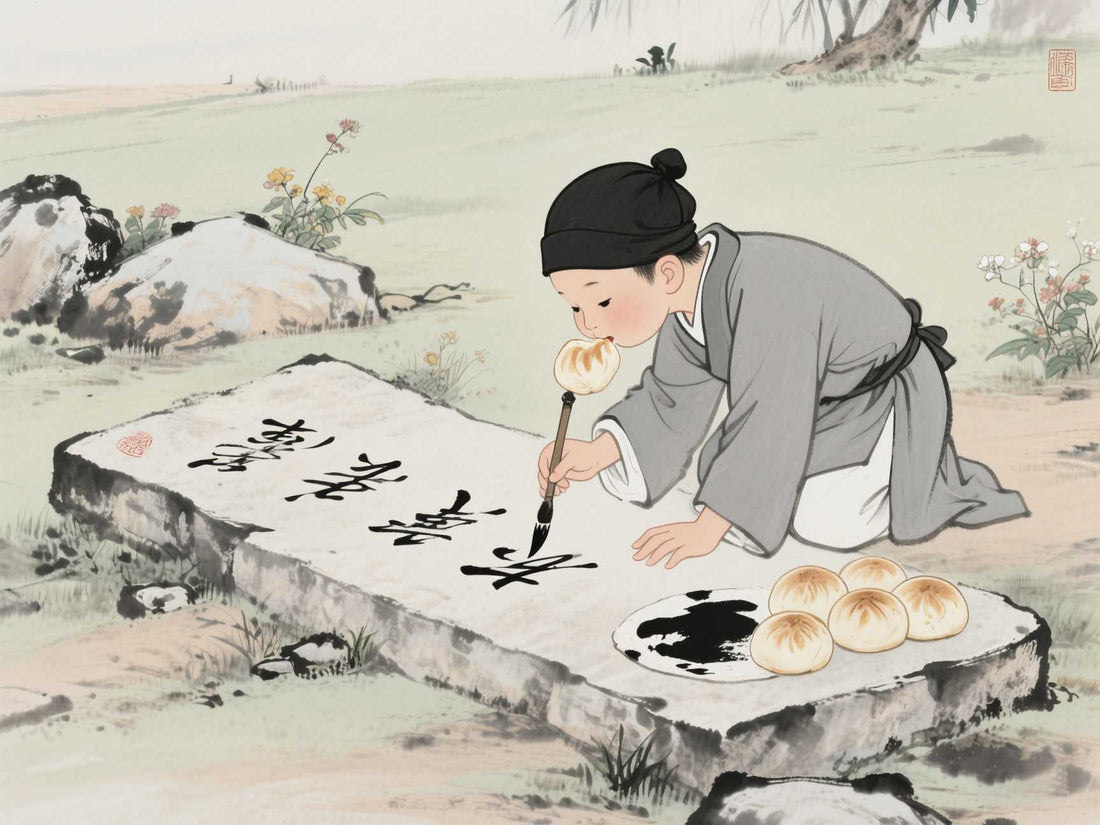
Wang Xizhi: "Ink as Garlic Paste"
Share
Core plot
Wang Xizhi showed an obsession with calligraphy when he was young. In his youth, he neglected his diet many times because he was so focused on practicing calligraphy. One day when he was practicing calligraphy, his servant girl brought him his favorite "garlic paste and steamed buns". However, because he was too focused on writing, he mistook ink for garlic paste and ate it, resulting in his mouth being covered in black without him realizing it. When his family members (mother or wife) found out, they couldn't help laughing, but Wang Xizhi was still immersed in thinking about his brushwork, and even said, "The mashed garlic smells very good today." This story has become a typical example of his image as a "bookworm".
Differences in details and cultural interpretation
-
Age differences
- Childhood version: When Wang Xizhi was about 11 years old, he was studying "Bi Shuo" and was so obsessed with copying calligraphy that he accidentally swallowed ink;
- Adult version: Described as the period of a young calligrapher, emphasizing the selfless state during his creative breakthrough stage.
-
Character scene differences
- The people present included the mother, the wife, the book boy or the maid, which showed the characteristics of folk interpretation in the process of the spread of the allusion;
- The placement of the key props "ink and mashed garlic" (such as close to the inkstone) is considered to be a realistic logic that may cause accidental ingestion.
3. Spiritual Enlightenment and Historical Influence
-
The symbolic significance of artistic pursuit <br>The story highlights Wang Xizhi's concentration of "forgetting food and sleep", reflecting the traditional literati's pursuit of the ultimate in skills. Later generations often used this to encourage students: "If you want to become a great person, you must first forget about the world and yourself."
-
Extension of cultural symbols
- The "ink pond" story (Wang Xizhi's calligraphy practice turned the pond black) and the "ink eating" incident together construct his legendary image of "the unity of man and calligraphy";
- Classics such as "Shu Duan" in the Tang Dynasty elevated his behavior to the artistic realm of "mind and hand forgetting each other".
- Historical authenticity : This story is not found in official history, but it was spread through notes and novels such as "Shishuo Xinyu" and became a typical narrative template for calligraphers among the people;
- Educational function : This story was included in Ming and Qing primers (such as "Youxue Qionglin") to emphasize the importance of "cultivating concentration".
This story vividly demonstrates Wang Xizhi's artistic personality of "not being crazy enough to live" with details. Its spiritual core is still regarded as a model of "craftsman spirit" in traditional Chinese culture.
